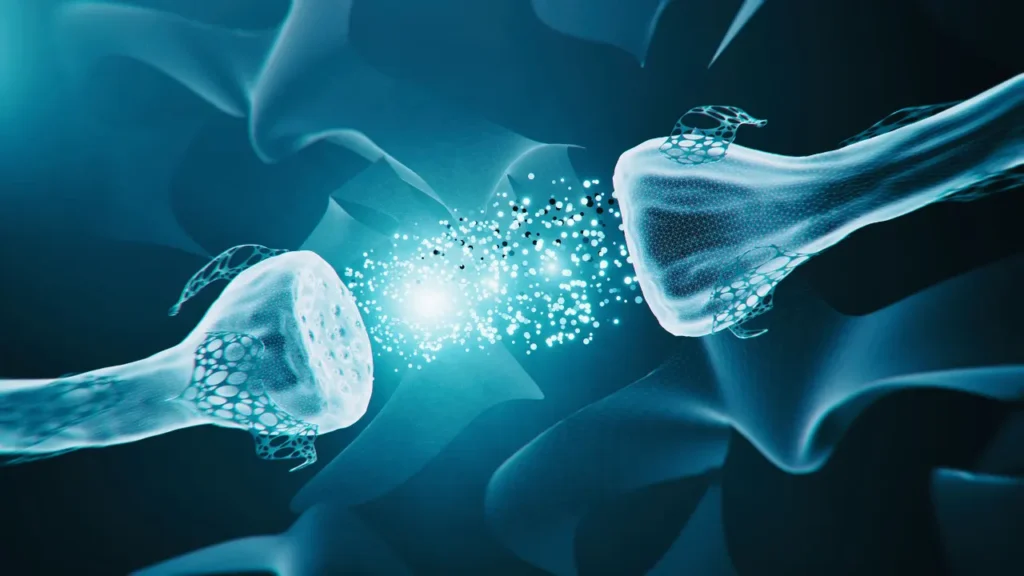Elements in Group 2 of the periodic table include strontium, which has the atomic number 38 and the symbol Sr. Strontium hydroxide and hydrogen gas are produced upon contact with this alkaline earth metal, which is softer than calcium and considerably more reactive in water. Although strontium compounds are reactive, they have found use in pyrotechnics and biological applications. Still, there is growing interest and scrutiny in the scientific community over its role as a nootropic substance that supposedly improves alertness, focus, and cognition. This article will provide in-depth information about strontium’s chemistry, physiological properties, possible health advantages, best dosages, side effects, drug interactions, and responsible use as a nootropic supplement.
You May Also Like:
NutriRise Ashwagandha Root Capsules Reviewed: A Leading Herbal Stress Support Product
Strontium: Benefits, Dosage, Side Effects, Drug Interactions, and Other Important Information is an original (NootropicsPlanet) article.
Nature of Strontium
Strontium is a soft, silver-white, alkaline earth metal that is a naturally occurring element. When it is first cut, it has a shiny sheen, but oxidation causes its surface to turn yellowish very rapidly. In minerals such as celestine (strontium sulfate) and strontianite (strontium carbonate), strontium is found in combination with other elements. The main materials used to extract strontium for commercial use are within these substances.
Strontium has a fairly strong reactivity with water, resulting in the production of hydrogen gas and strontium hydroxide, in contrast to its more reactive group neighbors like calcium. When considering its wider range of uses, strontium’s usefulness extends from its use as a glass-making ingredient to its possible health advantages as a dietary supplement. The biological functions of strontium, particularly as strontium ranelate, have attracted much scientific attention despite its chemical reactivity due to their possible benefits for bone health and, theoretically, cognitive enhancement.
Health Benefits
The exploration of strontium, particularly in the form of strontium ranelate, has illuminated potential health benefits mainly associated with bone health. It is essential to note that while some benefits are supported by scientific research, others can require further studies for comprehensive understanding. Below are detailed explanations of ten potential health benefits associated with strontium supplementation:
- Enhanced Bone Density: Strontium has been shown to positively affect bone density, particularly in individuals with osteoporosis. By mimicking calcium, strontium can be incorporated into the bone matrix, potentially increasing bone strength and reducing the risk of fractures.
- Reduction in Osteoporosis Risk: Regular supplementation with strontium ranelate has been associated with a decreased risk of developing osteoporosis, especially in postmenopausal women. This is attributed to strontium’s ability to stimulate bone formation while simultaneously reducing bone resorption.
- Improved Bone Healing: Preliminary studies suggest that strontium can accelerate the healing process of fractured bones. Its incorporation into the bone matrix could support quicker regeneration and recovery.
- Decreased Risk of Dental Cavities: Strontium can replace calcium in teeth, potentially making them more resistant to decay. Some toothpaste brands include strontium chloride or strontium acetate to help reduce dental sensitivity and prevent cavities.
- Enhanced Cartilage Matrix Production: Research indicates that strontium might stimulate the production of cartilage matrix in osteoarthritic conditions, suggesting a potential benefit in improving joint health and function.
- Neuro-protective Effects: Although the research is in early stages, there is a hypothesis that strontium supplementation could offer neuro-protective benefits, potentially due to its influence on calcium signaling pathways in neurons.
- Improved Management of Chronic Pain: Some studies have hinted at strontium’s ability to manage chronic pain, particularly related to skeletal conditions, although the mechanism and extent of this benefit requires further research.
- Potential Anti-Cancer Properties: In vitro and animal research has suggested that strontium can possess anti-cancer properties, particularly in bone-related cancers, by inhibiting cancer cell proliferation and inducing apoptosis. However, data is limited and warrants more research.
- Support in Periodontal Disease Management: Strontium has been found to potentially support the management of periodontal disease by reducing bone resorption in the jaw and supporting the health of periodontal tissues.
- Regulation of Blood Pressure: There is speculative evidence that strontium can play a role in regulating blood pressure, possibly through its interaction with calcium channels, though this effect is not well understood and is subject to ongoing research.
- Reduced Risk of Vertebral Fractures: Clinical trials have shown that strontium ranelate can significantly reduce the risk of vertebral fractures in individuals with osteoporosis, highlighting its potential as a therapeutic agent in bone health management.
- Enhanced Cognitive Function: Although the evidence is not robust, there is speculative interest in strontium’s potential to improve cognitive functions due to its influence on calcium signaling pathways in the brain. However, this area requires much more scientific inquiry to establish clear benefits.
It is crucial to approach the supplementation of strontium with caution, given the potential for side effects and interactions with other nutrients and medications. The benefits listed above underscore the importance of further research that is needed to fully understand strontium’s role in health and its optimal use in medical and supplemental contexts.

Chemistry of Strontium
Due in significant part to its placement in Group 2 of the periodic table, strontium has a distinct chemistry that is essential to its interactions within biological systems. Strontium, like the other metals in its group, is an alkaline earth and has a propensity to form divalent cations. When strontium is in its ionic state, Sr2+, it demonstrates characteristics that enable it to participate in a range of metabolic processes, especially those that contain calcium pathways.
Due to their comparable ionic radii, strontium and calcium ions can be substituted for one another in a variety of biological matrices and processes. Due to their comparable size and charge, the two ions are frequently unable to be distinguished by the molecular mechanisms of the cells, making strontium a viable substitute for calcium in biological systems.
Strontium compounds are reactive chemically, particularly when water is present. This leads to the formation of hydrogen gas and strontium hydroxide. However, when strontium is incorporated into more stable molecules like strontium carbonate or strontium ranelate, its reactivity is reduced in biological situations. Depending on the particular biochemical processes involved, these substances can be absorbed and used by the body, but with varied degrees of effectiveness and efficiency. Since strontium can resemble calcium, this property is both a benefit for possible therapeutic uses and a cause for concern because it requires careful regulation to integrate into physiological processes without upsetting normal calcium homeostasis.
Physiological Properties of Stontium
The chemical makeup of strontium and its interactions with calcium pathways are closely related to the physiological properties through which it affects the body and brain. Because strontium and calcium have comparable ionic sizes and charges, strontium can substitute calcium in a number of physiological processes when it is consumed and absorbed into the bloodstream. This substitution has been used to treat diseases like osteoporosis because it mainly affects the skeletal system. The consequences, however, are especially fascinating and intricate when it comes to neural activity and cognitive function.
Calcium ions are vital for the nervous system because they help transfer signals between neurons, release neurotransmitters at synapses, and maintain the flexibility of neuronal connections—all of which are necessary for memory and learning. Because strontium can substitute calcium in these processes, it can have an impact on brain activity and improve cognitive abilities like alertness, attention, and general cognition. The theory is that strontium could modify synaptic activity and thus the intensity and efficiency of neuronal signaling pathways involved in cognitive processes by changing the kinetics of calcium-dependent neurotransmitter release.
Nevertheless, research is still being done to determine the precise method by which strontium can improve cognitive abilities. There may be a fine balance because strontium has the ability to either enhance or obstruct calcium transmission in neurons. While optimum amounts of strontium can support or increase neuronal function, excessive amounts can interfere with normal calcium-mediated signaling. Understanding the physiological implications of strontium, especially concerning its possible nootropic effects, necessitates a sophisticated understanding of the role that calcium plays in neuronal activity and how the similarities between strontium and calcium can work in both positive and negative ways to modulate brain function.

Optimal Dosage
It is unknown what the ideal strontium dosage is for nootropic purposes. The daily doses of strontium ranelate used to treat osteoporosis vary from 500 to 2,000 mg. These dosages, however, are for a particular strontium compound and might not be suitable for usage with other nootropics. Before beginning a strontium supplementation regimen, individuals should speak with healthcare providers due to the lack of conclusive studies on the subject.
Side Effects of Strontium Supplementation
Strontium supplementation, especially in forms like strontium ranelate, can lead to various side effects, underscoring the need for cautious use. Common side effects may include:
- Gastrointestinal Distress: Nausea, diarrhea, and stomach pain are relatively common, particularly when supplementation is initiated.
- Dermatological Reactions: Some individuals may experience skin irritation, rashes, or itching.
- Neurological Effects: Rarely, headaches or dizziness can occur, potentially impacting daily activities.
- Cardiovascular Concerns: There is a noted risk of venous thromboembolism, particularly in individuals with preexisting risk factors for cardiovascular diseases.
Moreover, due to strontium’s similarity to calcium, excessive intake can interfere with calcium absorption, potentially leading to imbalances that might affect bone health negatively over time.
Potential Substance Interactions
The interactions of strontium with other drugs, especially those that impact the metabolism of calcium, need to be carefully considered. For instance, using calcium supplements at the same time may reduce the absorption of both minerals. Furthermore, vitamin D, which promotes the absorption of calcium, can also have an impact on the effectiveness and absorption of strontium. Bisphosphonates and other medications that change bone metabolism can also interact with strontium, thus patients taking such medications should consult a physician.

Best Responsible Use of Strontium
To ensure the safe and effective use of strontium supplements, consider the following guidelines:
- Consultation with Healthcare Professionals: Before starting any strontium supplementation, it is crucial to consult with a healthcare provider, especially for individuals with preexisting health conditions or those taking other medications.
- Adherence to Recommended Dosages: Follow the recommended dosages provided by healthcare professionals or as indicated on supplement labels. Avoid exceeding these guidelines to minimize the risk of side effects.
- Monitoring for Side Effects: Individuals should monitor themselves for any side effects post-supplementation and report these to their healthcare provider to adjust the dosage or discontinue use as necessary.
- Balanced Diet: Ensure a balanced diet that provides adequate calcium and vitamin D, among other nutrients, to support overall bone health and mitigate potential negative interactions with strontium.
- Regular Medical Review: Regular check-ups can help monitor the impact of strontium supplementation on bone health and adjust the approach as needed.
Following these practices ensures that individuals can responsibly explore the potential benefits of strontium supplementation while minimizing the risks associated with its use.
Strontium:
Conclusion
Strontium supplements, often derived from strontium ranelate, have garnered attention for their potential impact on bone health. While research is ongoing, some studies suggest that strontium may enhance bone density and reduce the risk of fractures in individuals with osteoporosis. However, caution is necessary due to potential side effects, including gastrointestinal discomfort and cardiovascular risks. As with any supplement, consulting a healthcare professional before incorporating strontium into your regimen is crucial to make informed decisions about its use.

References:
- Strontium Attenuates Hippocampal Damage via Suppressing Neuroinflammation in High-Fat Diet-Induced NAFLD Mice. Retrieved from:https://www.ncbi.nlm.nih.gov/pmc/articles/PMC10299345/#:~:text=PMID%3A%2037373395-,Strontium%20Attenuates%20Hippocampal%20Damage%20via%20Suppressing%20Neuroinflammation%20in,Fat%20Diet%2DInduced%20NAFLD%20Mice
- Strontium – Uses, Side Effects, and More. Retrieved from: https://www.webmd.com/vitamins/ai/ingredientmono-1077/strontium
- Strontium supports synaptic transmission and long-lasting potentiation in the hippocampus. Retrieved from: https://pubmed.ncbi.nlm.nih.gov/6247030/
Important Note: The information contained in this article is for general informational purposes only, and should not be construed as health or medical advice, nor is it intended to diagnose, prevent, treat, or cure any disease or health condition. Before embarking on any diet, fitness regimen, or program of nutritional supplementation, it is advisable to consult your healthcare professional in order to determine its safety and probable efficacy in terms of your individual state of health.
Regarding Nutritional Supplements Or Other Non-Prescription Health Products: If any nutritional supplements or other non-prescription health products are mentioned in the foregoing article, any claims or statements made about them have not been evaluated by the U.S. Food and Drug Administration, and such nutritional supplements or other health products are not intended to diagnose, treat, cure, or prevent any disease.


